‘Where’s the maths in that? Unlocking maths imagination’
Of all the deep dive challenges/ collaborative learning opportunities, I enjoy a good old ‘where’s the maths in that?’ session the most.
Before I carry on though, its important to remind myself of the reasoning behind this collaborative part of the lesson.
Our school
There are 320 children on roll and we serve a diverse and disadvantaged community with 76% EAL children speaking 35 languages. We also have 17% SEN and a deprivation indicator of 0.47 placing us in the highest quintile of deprivation. Many of our children join the school at a very early stage of English acquisition. (SEF/ Raise On-line 2016)
The opportunity to submerge our EAL children in a language rich environment, to promote children taking control and owning their own learning was an opportunity too good to miss especially considering the ‘mathematical reasoning’ area of the National Curriculum. I realised the benefits of collaborative learning a few years ago (details here)
‘Throwing them in at the deep end’ (pun intended) of their learning through collaboration, has had a positive impact on the children over time to develop confidence (EAL or otherwise) with mathematical language, thinking, justification, enabling them to justify their decisions and provide proof. Providing a daily ‘Deep Dive Challenge’ at the beginning of a maths lesson ’empowers’ all children to ‘own’ their learning journey, provides language acquisition opportunities and also allows for plenty of language ‘modelling’ from the children themselves, Teachers and LSAs. Of course attitudes to maths and attainment is also vital!
^^You can see the challenges that 35 spoken languages have on collaborative learning!^^
‘Where’s the maths in that?’
I wouldn’t advise giving this type of open ended activity unless your children have had experience of a more structured ‘Deep Dive Challenge’ like these illustrated here >> They also need to have a range of methods/ strategies ready to use.
It requires a clear, systematic approach that the children manage themselves with targeted input from the teacher/ other adults in the room. Managed carefully, these can open up a whole new way of approaching maths, unlocking their ‘imathsination’ (maths imagination)
Examples
How Many Cubes?
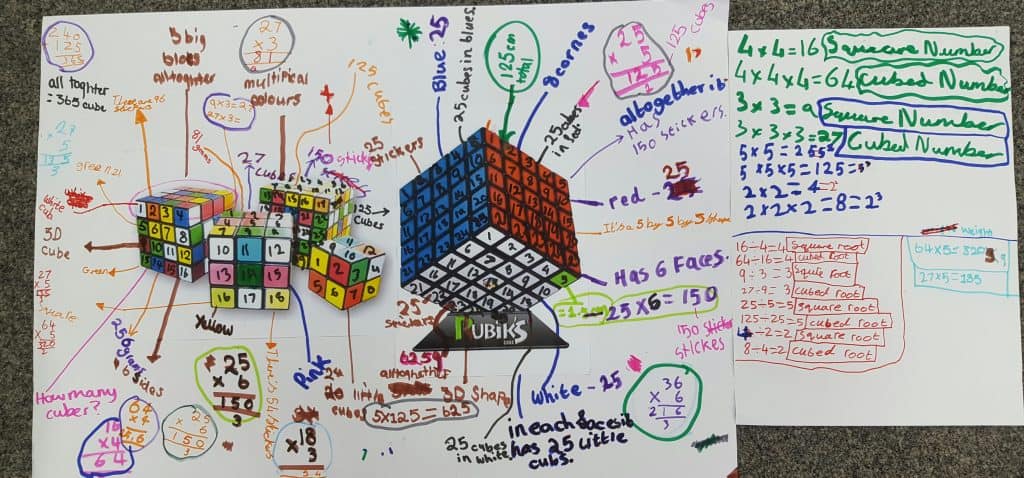
How Many Balls?
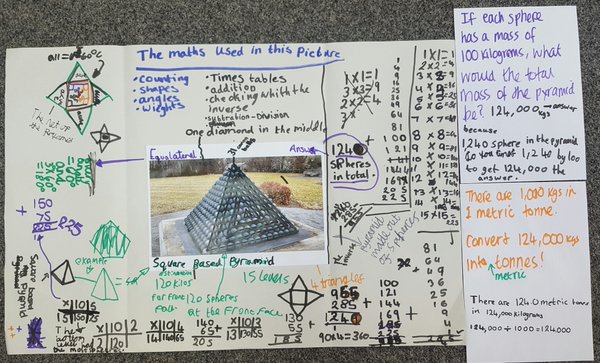
How Many Melons?
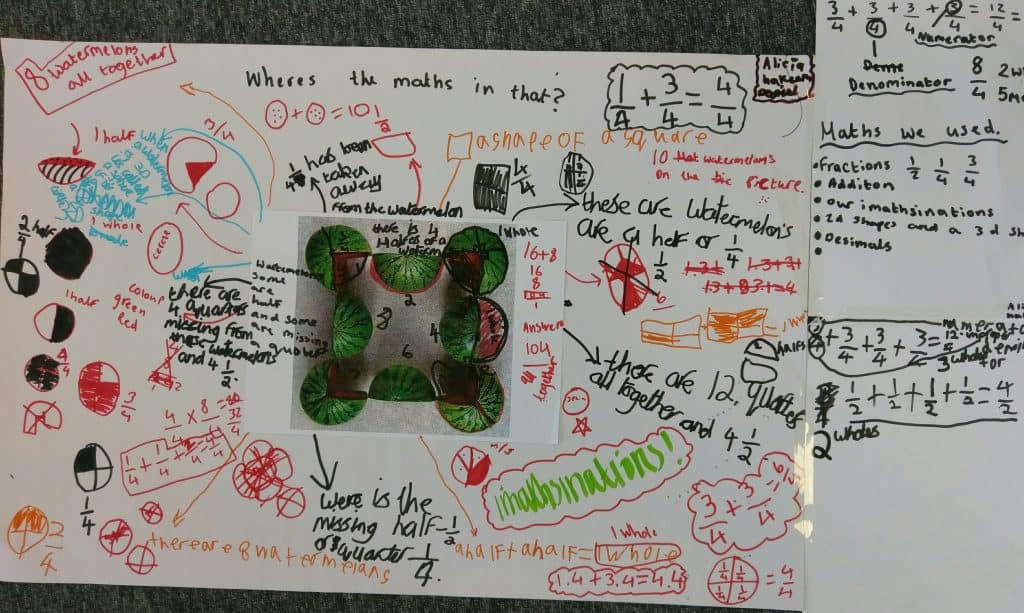
Where’s the maths in a Twitter profile page?
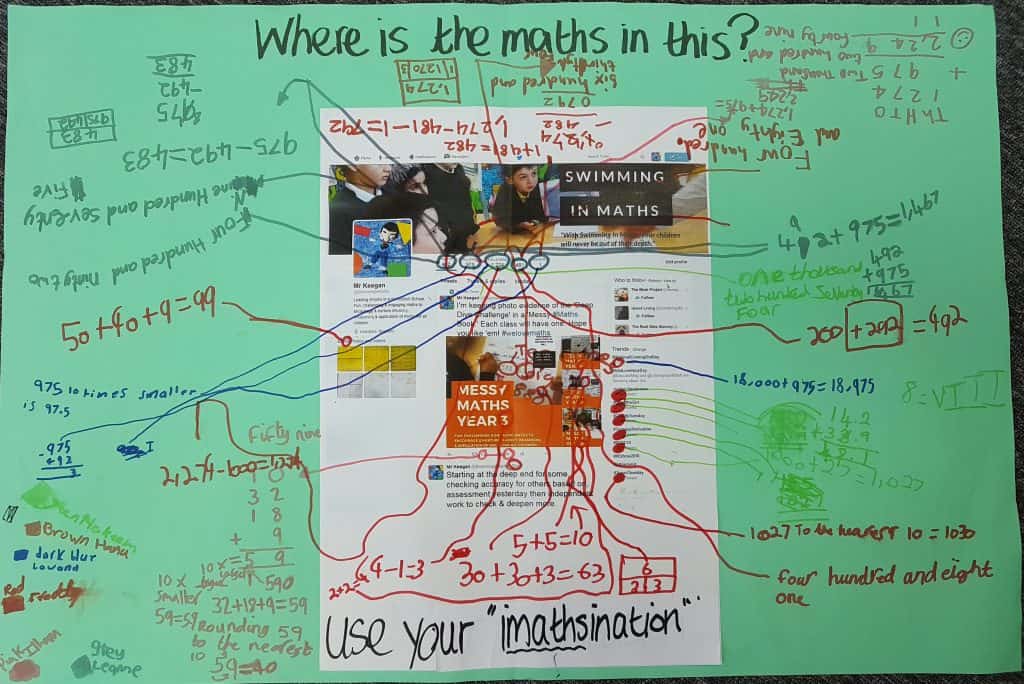
The iPhone Screen
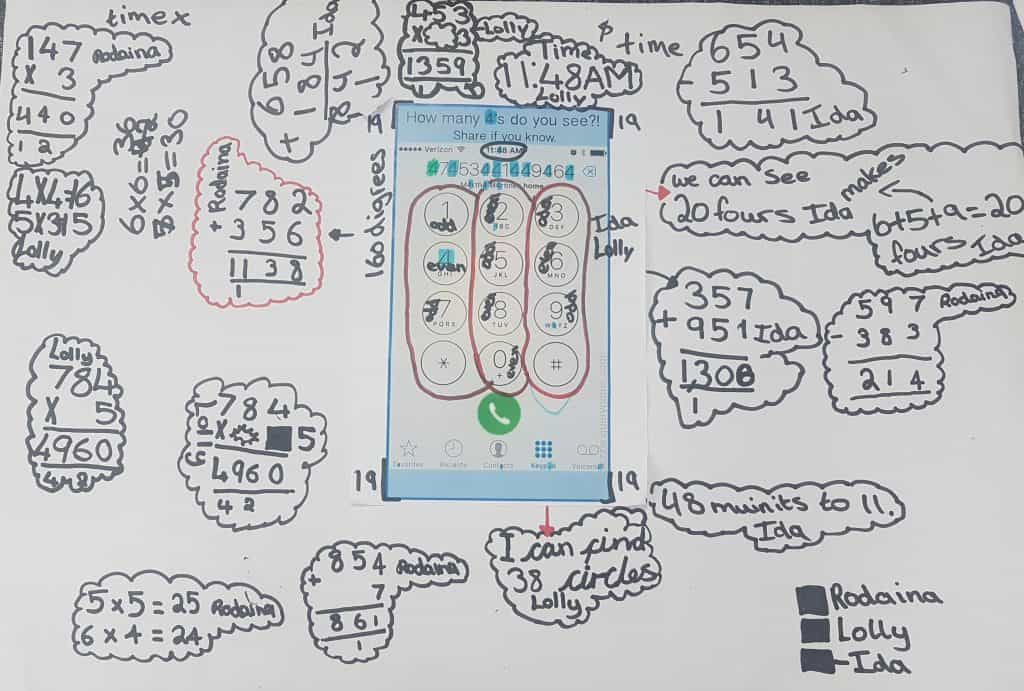
The Toblerone Challenge
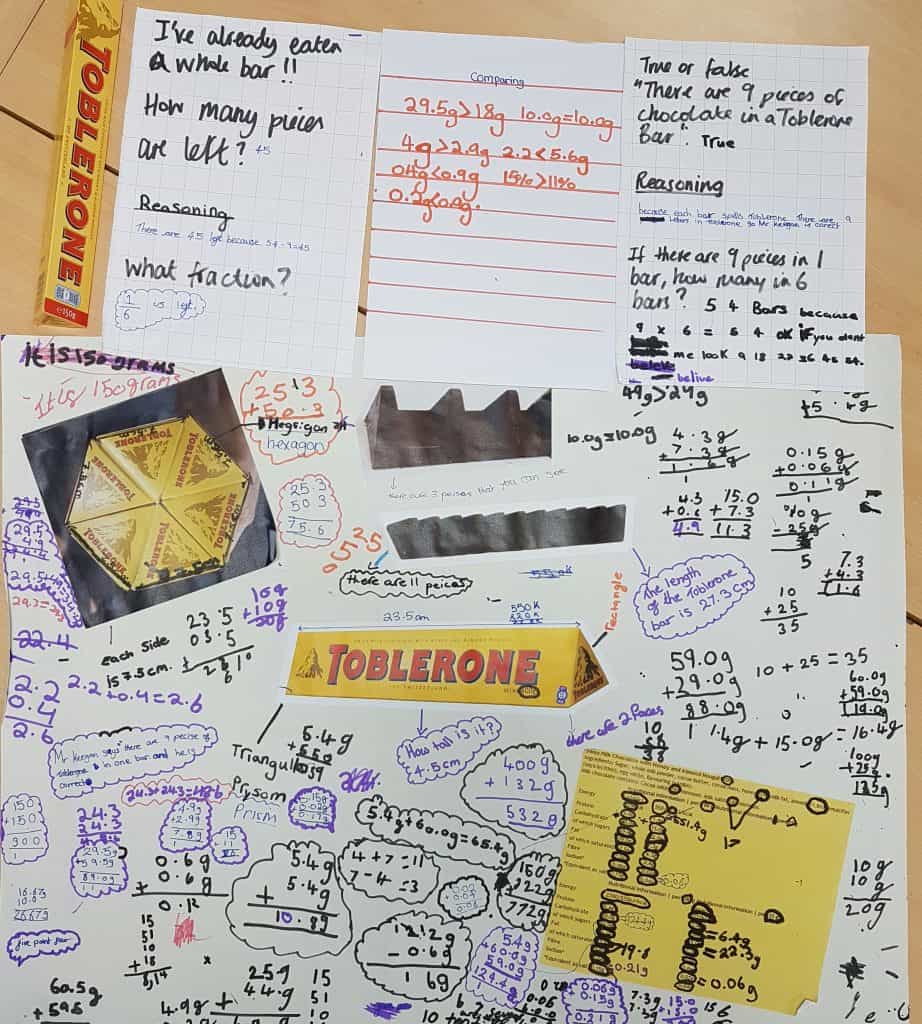
There are many more opportunities out there. Like Pokemon, we need to find them all!
Swimming Scores
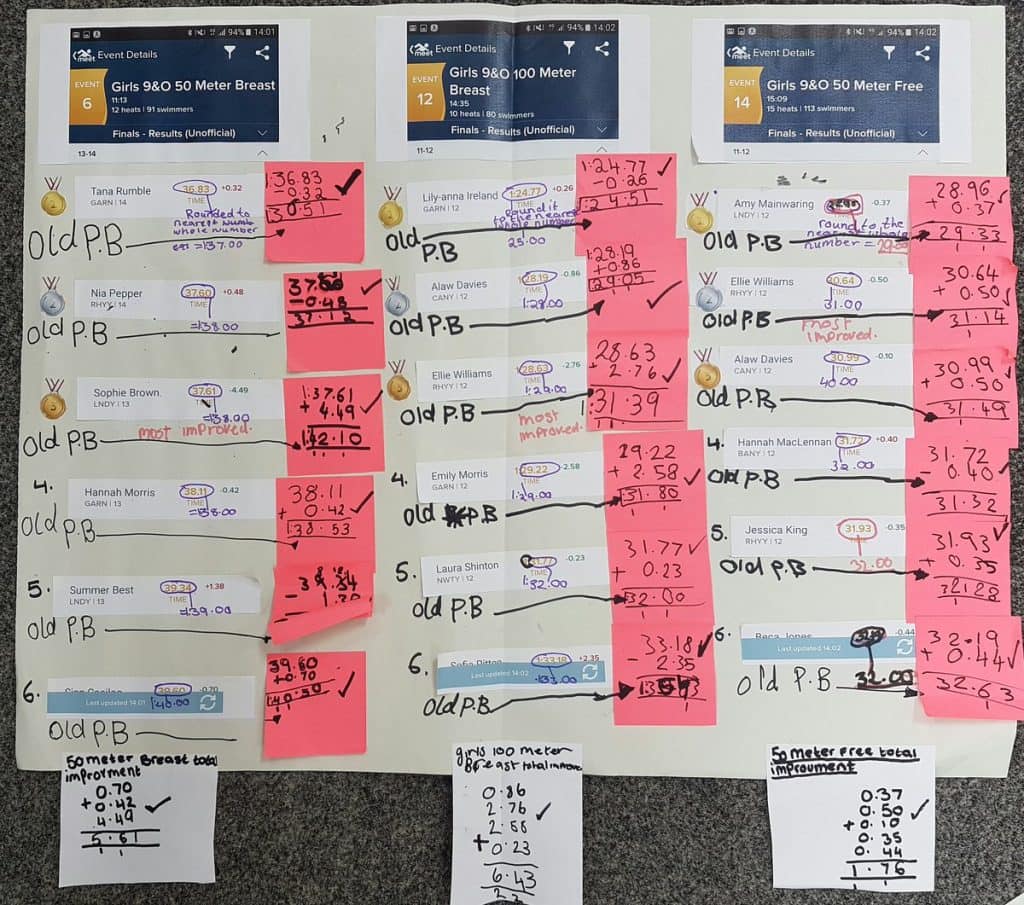
Buildings
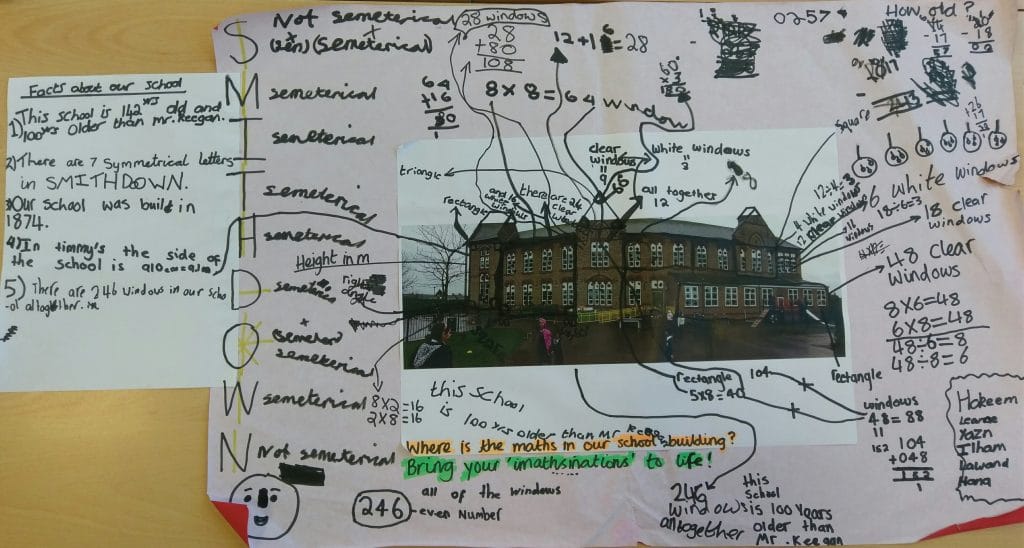
Things to consider
These activities are active, high impact and may take a couple of days to complete (2×10 mins). The children are doing the majority of the work. Our job is to exploit opportunities to stretch and deepen further via careful targeting of groups and individuals with skillful questioning.
But don’t take my word for it. Have look below at what people on twitter are saying
Where's the Maths in that? Where's Wally themed Maths! #imathsination #worldbookday @StAnnesLiv pic.twitter.com/weGDEcKJdQ
— Miss Mulgrew (@Y3stannes) March 2, 2017
Today's deep dives into mastery and greater depth, plus a London based imathsination challenge! @SwimmingInMaths @PrimaryRocks1 #maths #deep pic.twitter.com/k67eW5IWk7
— Fred Nat Acad Y6 (@FNAYear6) February 28, 2017
Today's #maths Some serious planning, measuring and calculations happening! @kestrelsfield #messymaths #imathsination #outdoorlearning pic.twitter.com/qHWwWVdbFC
— Miss Rehal (@Miss_Rehal) February 21, 2017
Maths reasoning! We will use our #imathsination to solve this problem AND explain how we did it! ✏️➕➖➗✖️@kestrelsfield #proveit #maths pic.twitter.com/0uDgya5c5l
— Miss Rehal (@Miss_Rehal) February 10, 2017
Y5 and Y6 deep dive imathsination! #reasoning #backintheswing @SwimmingInMaths pic.twitter.com/rIQNcHjxOd
— Fred Nat Acad Y6 (@FNAYear6) January 12, 2017
imathsination!!!!! brilliant https://t.co/P3SfpZYRzo
— Paul Killen (@Killenp) October 12, 2016
Man. City v Barcelona …..Deep Dive numeracy on the match centre….where's the maths in that? pic.twitter.com/0Bnti1Dahh
— Mr. Jennings (@MrJenningsFNA) November 1, 2016
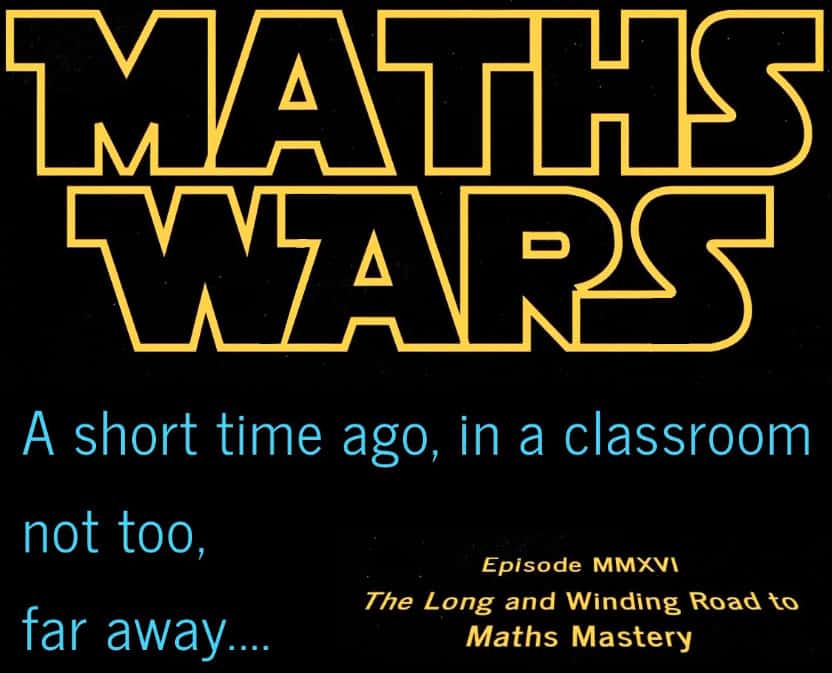
Have you got any ideas for ‘Where’s the maths in that?’
Leave a comment!
🙂
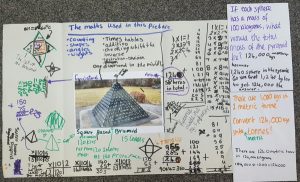
2 thoughts on “Where’s the maths in that? Unlocking maths imagination”